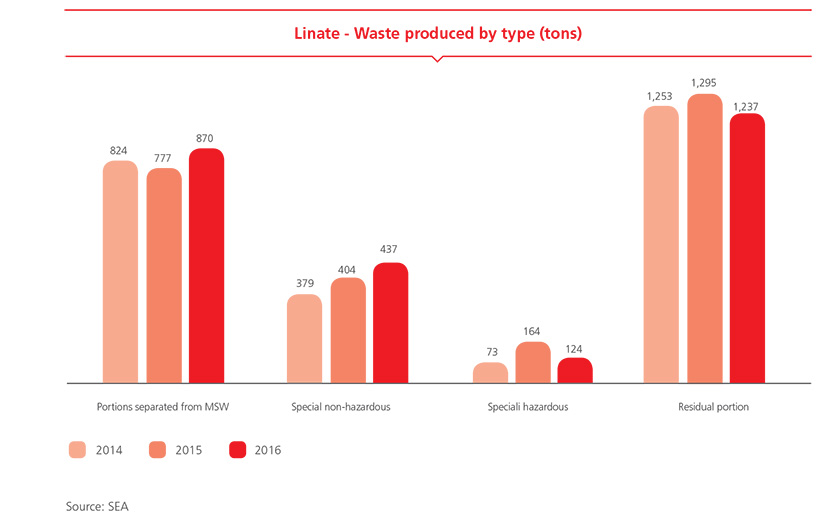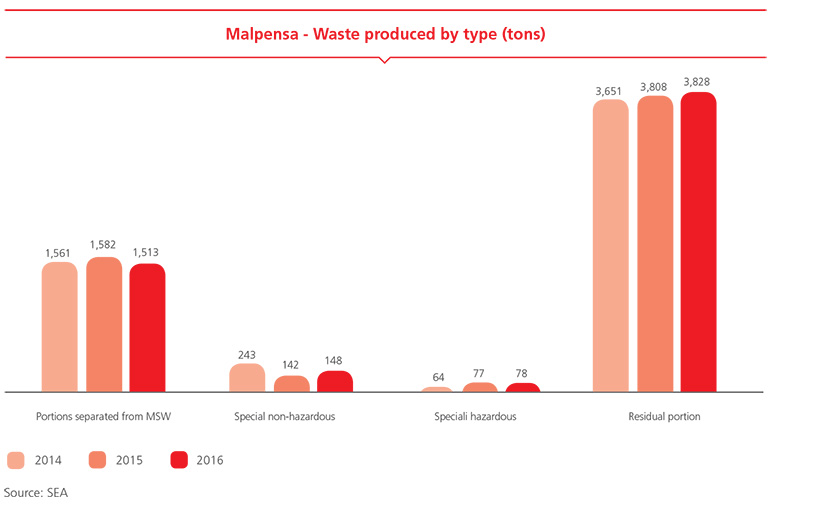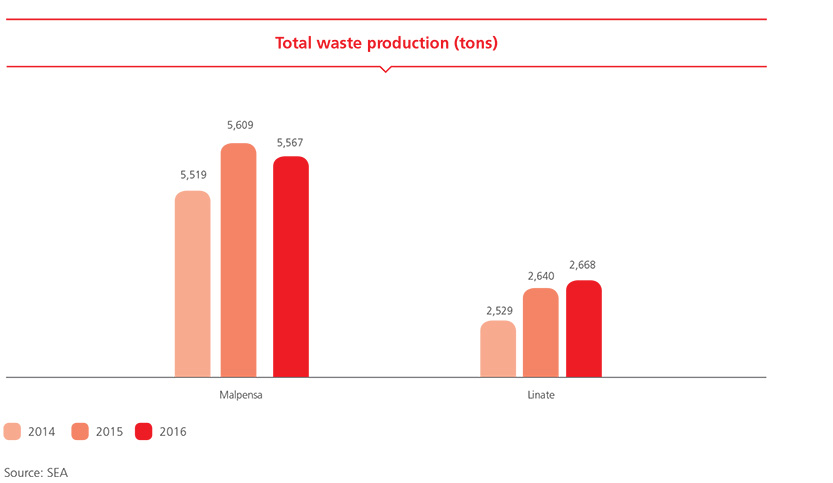Waste management*
Waste produced as part of airport activities of office management, aircraft cleaning, infrastructure maintenance, retail and catering are mostly similar to those produced in a city and are divided into:
- municipal solid waste and similar, generated by cleaning activities in terminals and auxiliary buildings and aircraft cleaning activities. Such waste is collected in special equipment (skips and bins) appropriately distributed around the airport grounds and disposed of by companies appointed by local authorities. Municipal solid waste and the like consists of a dry portion and several separated portions;
- hazardous special waste (e.g. used oil, oily emulsions, oil and diesel filters, sanitary waste, etc.) and non-hazardous (e.g. ferrous scrap, expired pharmaceuticals, alkaline batteries, etc.) resulting from SEA's maintenance activities;
- food waste consisting of leftover meals consumed by passengers on aircraft, which are managed and disposed of directly by catering companies and which are not dealt with by the airport operator.
* The data does not include SEA Energia.


The total production of waste at Linate for 2016 was 2,668 tons , an increase of 1.1%, while Malpensa's overall production amounted to 5,567 tons , a decrease of 0,8% compared to 2015.

In 2016 we continued our commitment to waste separation for recycling, accounting for 53.6% at Linate and 31.2% at Malpensa, considering also the separate collection of special waste. At Linate there was an increase compared to the previous year, while Malpensa had a slight decrease.
% Recycling collection
| 2016 | 2015 | 2014 | |
|---|---|---|---|
| Malpensa | 31.2 | 32.1 | 33.9 |
| Linate | 53.6 | 50.9 | 50.5 |
Source:Sea